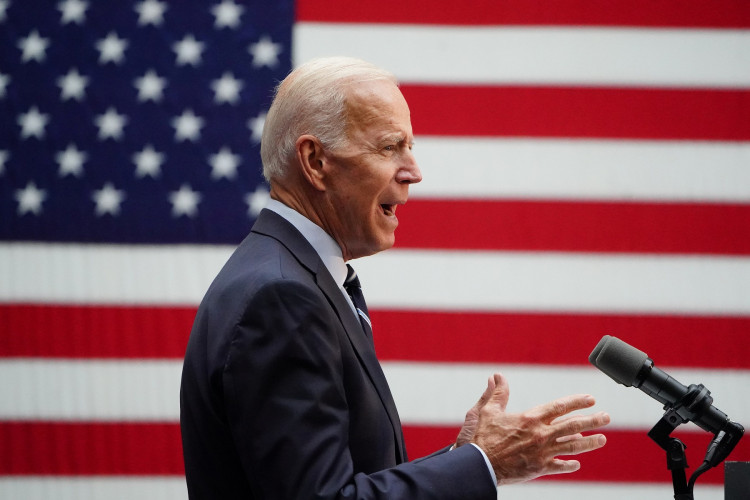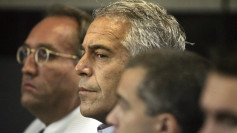The annual Asia-Pacific Economic Cooperation (APEC) Leaders' Summit has commenced in San Francisco, marking the first time in 12 years that the United States is hosting the forum.
The summit, which started on Nov. 11, is set to run for a week. According to the official agenda on its website, senior officials' meetings took place on Nov. 11-12, followed by a finance ministers' meeting on Nov. 13. The schedule for Nov. 14-15 includes meetings of foreign and trade ministers, while the business leaders' meeting is slated for Nov. 14-16. The climax of the event, the leaders' meeting, will occur on Nov. 16-17.
Founded in 1989, APEC is an informal dialogue forum aimed at promoting regional economic integration. Its membership currently comprises 21 economies around the Pacific Rim, including Australia, Brunei, Canada, Chile, China, Hong Kong (China), Indonesia, Japan, South Korea, Malaysia, Mexico, New Zealand, Papua New Guinea, Peru, the Philippines, Russia, Singapore, Taiwan (China), Thailand, the United States, and Vietnam. This region accounts for nearly 40% of the global population and over 60% of the world's trade.
This year's forum is centered around the theme "Creating a Resilient and Sustainable Future for All," focusing on trade and investment facilitation, the digital economy, clean energy and climate, health, gender equality and equity, as well as anti-corruption and food security.
According to a press release on the APEC website, delegates will deliberate over a week on three priority areas under the themes of "Connectivity, Innovation, and Inclusion": the "Digital Pacific Pillar" to expand digital connectivity, the "Sustainable Development Pillar" for promoting sustainable and inclusive energy transitions, and the "Resilient and Inclusive Growth Pillar" to deepen economic ties and enhance supply chain resilience.
The question of whether regional business relations can be eased is a common topic of discussion. Traditionally, APEC's strength has been in fostering cooperation among members on major initiatives to reduce tariffs and other trade barriers and ease economic and trade relations.
Rebecca Sta Maria, the Executive Director of the APEC Secretariat, indicated that this week's meetings would focus on regional economic integration rather than differences and divisions. The White House, meanwhile, stated that the goal of this year's summit is to make APEC economies more resilient, especially in the face of severe climate issues and the global COVID-19 pandemic, which has caused millions of deaths and strained supply chains.
Matt Murray, a senior U.S. official for APEC, emphasized that the forum remains a primary platform for advancing economic and trade policies, fostering innovative ideas, and supporting businesses, especially small and medium enterprises. It also provides the U.S. with opportunities to shape trade policies and promote economic growth in the dynamic Asia-Pacific region.
However, the current trade landscape differs from the level of globalization when APEC was established. Despite the U.S. continuing to emphasize the importance of cooperation, its strategic focus is on economic competition with China rather than cooperation. Meanwhile, the Biden administration is seeking to build partnerships with other countries in the Asia-Pacific region to develop alternatives to Chinese-manufactured imports. Biden is also trying to advance a new Indo-Pacific trade agreement that excludes China.
At the meeting on Nov. 12, the APEC Policy Support Unit released a new regional trends report. Carlos Kuriyama, one of the report's co-authors and director of the APEC Singapore Institute, noted that regional economic growth has improved and is more stable than in previous years, which is encouraging. However, there are risks of walking a tightrope in downward expectations.
The report forecasts a 3.3% GDP growth for the 21 APEC economies this year, up from 2.6% last year, but it is expected to drop to 2.8% next year. Overall, the forecast for the next three years lags behind other global economies.
The report highlights some bright spots in the region, such as tourism, domestic consumption, and targeted fiscal support driving economic activity. However, these are overshadowed by numerous factors. "Including lingering issues from the COVID-19 pandemic, inflation, rising debt, climate change, trade protectionism, geopolitical tensions, and economic fragmentation, all cast a shadow over the regional outlook," Kuriyama said.
Downside risks are multifaceted. For instance, inflationary pressures and rising trade financing costs, coupled with global uncertainty, have led to sluggish trade in the region. Additionally, demographic changes, such as declining birth rates and an aging population, pose challenges.
The report noted a recent decline in foreign direct investment in North Asia, which has been beneficial for Southeast Asia. However, it's too early to determine whether this is a result of U.S. "decoupling" and "friend-shoring" policies or driven by rising production costs and other macroeconomic factors. What is certain is that a stable relationship between China and the U.S. is a win-win for everyone, as cooperation between the world's two largest economies is "very meaningful."
Kuriyama stated that multilateral coordination remains crucial for addressing trade protectionism, rising debt, climate change, green economic transition, and supply chain disruptions. Cooperation is also vital for solving the complex challenges facing the APEC region.
However, the most eye-catching event is undoubtedly the China-U.S. presidential meeting outside the conference venue. This will be the first face-to-face meeting since the last encounter of the Chinese and U.S. presidents in Bali, Indonesia, at the G20 summit in November last year.
The Chinese Foreign Ministry announced on Nov. 10 that Chinese President Xi Jinping would visit San Francisco from Nov. 14-17 to hold a China-U.S. presidential meeting at the invitation of U.S. President Joe Biden and attend the 30th APEC Leaders' Informal Meeting.
Regarding the China-U.S. presidential meeting, Chinese Foreign Ministry spokesperson Mao Ning said at a press conference on Nov. 13 that the two heads of state would communicate in-depth on strategic, overall, and directional issues concerning China-U.S. relations, as well as major issues concerning world peace and development.
Regarding the U.S. side's expectations for the meeting, White House Press Secretary Jean-Pierre stated in a press conference last week that the two leaders would discuss "bilateral relations between the U.S. and China, the continued importance of maintaining open channels of communication, and a range of regional and global issues."
In a TV program on Nov. 12, U.S. National Security Advisor Sullivan revealed that the U.S. also wants to restore military communication channels between China and the U.S., as Biden "wants to see a rebuilding of the military relationship because he believes it is in the national security interest of the United States."
However, some U.S. experts have low expectations for the meeting. Colleen Cottle, Deputy Director of the Atlantic Council's China Center, suggested that one should not have high hopes for tangible and deliverable outcomes from this meeting. It might be more symbolic, demonstrating the commitment of the leaders of both countries to maintain high-level communication and to keep channels open for the coming year.
Thomas Fingar, a China expert at Stanford University and former chairman of the U.S. National Intelligence Council, also believes that while expectations for specific outcomes are low, this meeting could pave the way for future discussions on solutions to issues affecting both countries.
Even though the interaction between these two major powers is crucial, it is not the entirety of this 21-economy meeting. Observers note that, in addition to this, the interactions of certain bilateral countries at this international event are also worth attention. For instance, Japan and South Korea are scheduled to hold bilateral talks during the meeting, and the United States and Malaysia have also arranged a bilateral meeting.






